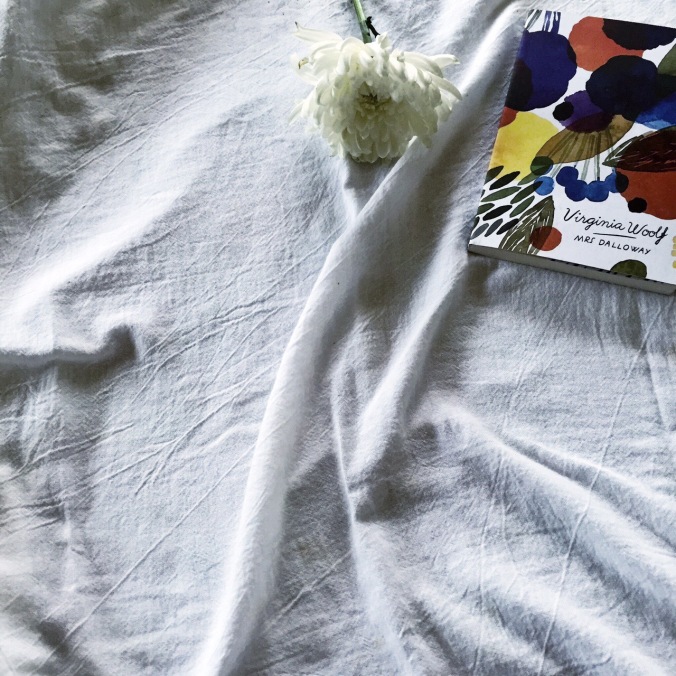
‘Mrs Dalloway’ by Virginia Woolf, follows a day in the life of Clarissa Dalloway, middle aged, graying wife of eminent British politician, Richard Dalloway. It is no ordinary day, however. It is the day on which Clarissa will host a glittering evening party, where the creme-de-la-creme of British high society, including the Prime Minister himself, will grace the Dalloway’s Westminster residence.
The novel in its most simplistic form can be viewed as a day in the life of a lonely, married woman but it is so much more than that. It is a novel dealing with many topics of far-reaching significance, not limited to mental illness, the aftermath of the First World War, class structure and homoerotic love.
The narrative structure switches fluidly from the third person to the first person, giving the reader an intimate view of the external and internal worlds of the characters in the novel. The use of free indirect discourse makes us privy to moments of flawless and breathtaking intimacy.
The novel (originally called ‘The Hours’) is leant great structure by the division of the hours of the day by the regular, metallic intonations of Big Ben’s chimes. The regular reverberations help to provide pause to a novel, otherwise lacking in chapters or page breaks- ‘the leaden circles dissolved in the air’.
Despite the novel covering the incidents encompassing a single day, we find time expands and we effortlessly dip into Clarissa Dalloway’s past- her memories at Bourton and the friends she had in her youth. We meet her childhood sweetheart Peter Walsh and also the love of her life Sally Seton. We also meet Richard Dalloway, whom she eventually decides to marry.
The plot of the novel is rather loose but it holds the threads of the stories of several individuals who are directly or indirectly related to one another.
There is the thread of former sweetheart Peter Walsh, freshly returned from India, and trying to secure the divorce of a fresh flame- a married woman in India. He briefly visits Clarissa on the morning of her party and is struck with how much he still loves her.
There is the thread of Richard Dalloway, who shares a sterile yet companionable relationship with his wife of many years. There is a memorable moment when he spontaneously decides to bring Clarissa flowers in the afternoon but despite exerting considerable effort, finds himself unable to tell her that he loves her.
Then there is the thread of daughter Elizabeth Dalloway and her relationship with tutor Miss Kilman. Clarissa finds herself disturbed with their close relationship whereas staid Richard Dalloway brushes it off as being nothing.
Most importantly there is the thread of Septimus Warren Smith, war veteran, victim of shell shock and his Italian wife Lucrezia Warren-Smith. Theirs is a poignant story, where the wife recognizing signs that her husband has lost the will to live, battles to secure his mental well-being and lives in constant fear that he will take his own life.
The collective threads of the story are brought together in climax at Clarissa’s evening party, when Peter Walsh, Sally Seton, other friends, family and members of the Dalloway social circle (including Septimus’ physician Sir William Bradshaw) congregate at their home. It is here that the news of Septimus Warren-Smith’s death by suicide reaches the ears of Clarissa. Her spontaneous reaction to the news is one of annoyance that the Bradshaws should sully the mood of her party with this unwanted piece of information. By being privy to Clarissa’s inner thoughts we witness her raw, self-centred but honest reaction to the death of a man she never knew. Despite her jarring initial reaction, we later find Clarissa, drawing away from the party and musing privately about the life of the man and the circumstances of his death.
In a way Woolf uses ‘Mrs Dalloway’ as a medium to criticize the treatment and understanding of mental health issues, a subject that was very near to her heart.
Perhaps parts of Woolf herself are strewn in bits and pieces across the broad scope of the novel. She inhabits the personas of many of her main characters but it is evident that she doesn’t wholly inhabit any of them. She and Leonard Woolf are not as upper middle class as the Dalloways, neither is she the slightly mindless socialite that is Clarissa Dalloway. Woolf does share the mental issues of Septimus Warren- Smith ,however, and traces of her relationships with men and women are to be found in ‘Mrs Dalloway’.
‘Mrs Dalloway’ is a book that I have a feeling I will read many times, to distill further insights and information upon successive readings. Moreover, delving into that beautiful prose is a treat unto itself, even though the reading experience is not the easiest.
Title: Mrs Dalloway
Author: Virginia Woolf
First published: 1925
Characters: Clarissa Dalloway, Richard Dalloway, Peter Walsh, Sally Seton, Septimus Warren-Smith
Great review of a beautiful novel! Have you read The Hours by Michael Cunningham? It’s sort of a love letter to Mrs Dalloway, and a wonderful novel in it’s own right.
LikeLike
No I haven’t actually but a number of people have recommended it to me. Thank you.I must get to it.
LikeLiked by 1 person